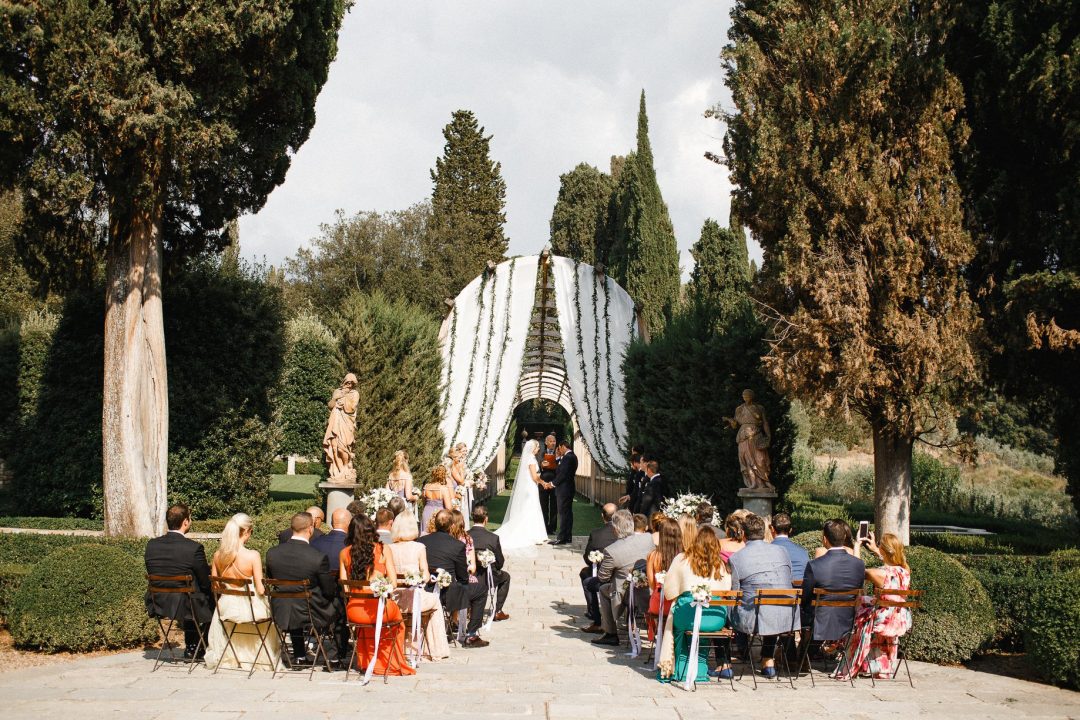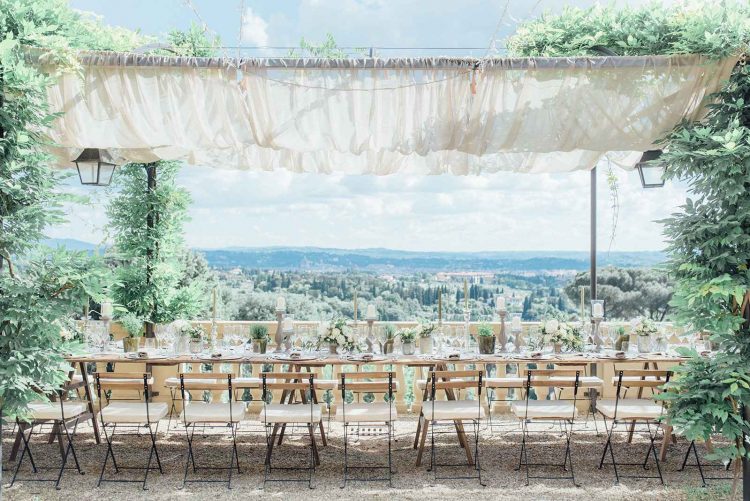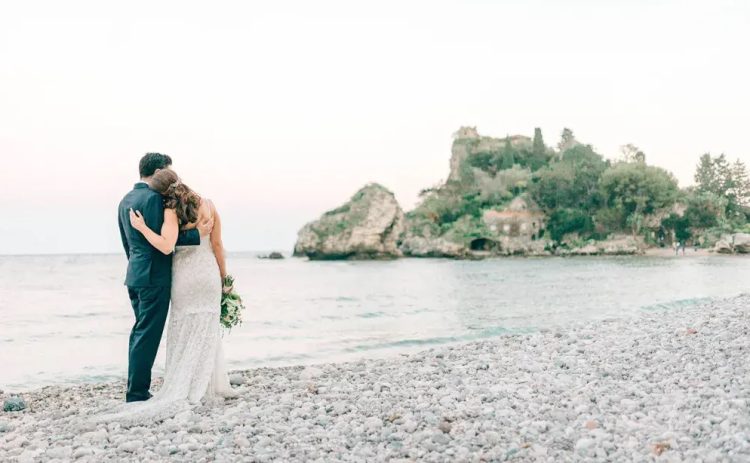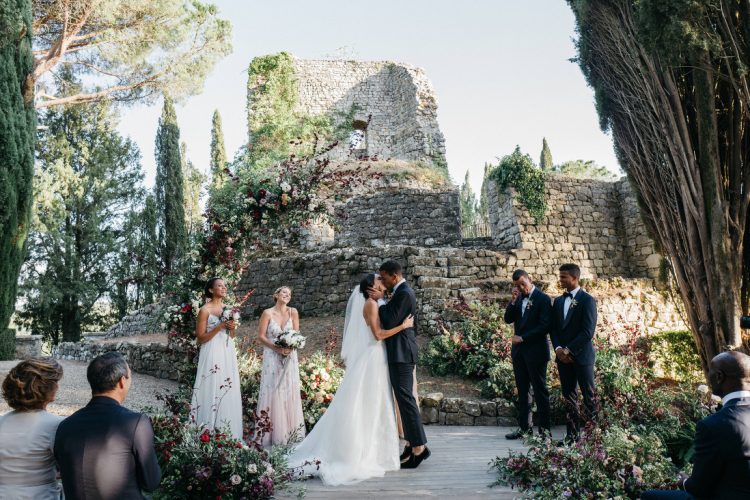This article is the first part of a trilogy discussing the legal requirements for the different types of ceremonies you can have for your dream destination wedding in Italy.
Congratulations! If you’re reading this article, it means you’re newly engaged and you’ve decided to get married in Italy. Perhaps you’re still researching requirements to see if it’s possible for you. In both cases, you’re in the right place.
There are many kinds of ceremonies you can choose from. And your first main decision will have to be picking between a civil or a symbolic ceremony. This is an essential decision to be made since it will impact many aspects of the wedding: the venue, the legal requirements, or the length of the planning period.
The beauty of a symbolic ceremony is that it doesn’t require any sort of procedure apart from the shaping of the ceremony itself. For example, you can include elements such as readings, rites, accompaniment, and choreography. Your wedding planner will guide you through the whole process. They will put you in touch with a professional celebrant, or collaborate with the one that you have chosen. In conclusion, what draws the couples toward this solution is the flexibility to personalize the rite to express their story and personality. The symbolic wedding is the only ceremony that you can design thoroughly.
No Rules
In short, the following 3 points will help you have a better understanding of the symbolic wedding:
- No legal validity: couples that decide to have a symbolic ceremony cannot obtain a marriage license. Which in turn means no extensive paperwork!
- Free of structure: you can ask a family member or a loved one to conduct the ceremony. A priest or a public official only bless religious and civil unions.
- Easy to handle: a symbolic wedding can take place anytime, anywhere. In other words, you can get married on a terrace, in a theatre, by the beach or even on a gondola… yes, we’ve already done it!
Different Rites
And finally, let’s take a quick look at a sample of the rites that you can do. You can always personalize them and make them your own:
- The hands joining rite: the celebrant ties the bride and groom’s hands together, wrapping them with a precious ribbon. It’s an ancient, powerful rite, dating back to the Celtic culture.
- The seed planting rite: the bride and groom together plant a seed and water it. Perfect for those couples who cherish nature above everything else.
- The cords braiding rite: the bride and groom braid 3 strands and clinch them with a knot. The Bible says “a cord of three strands is not easily broken” (Ecclesiastes 4,12). It symbolizes the strength originated by uniting two lives in a new one.
- The candle lighting rite: the bride and groom hold a candle each and, together, light a bigger one. It’s a simple yet powerful symbol of the new entity’s value, and how it gets its strength from the individuals and boosts it.
Now that you have a better idea about symbolic weddings, head to the second part of the trilogy covering civil ceremonies.
Found this article helpful? To learn more, visit our blog and check our website to start planning your dream destination wedding in Italy.
Feature image: Photographer Matteo Crescentini








